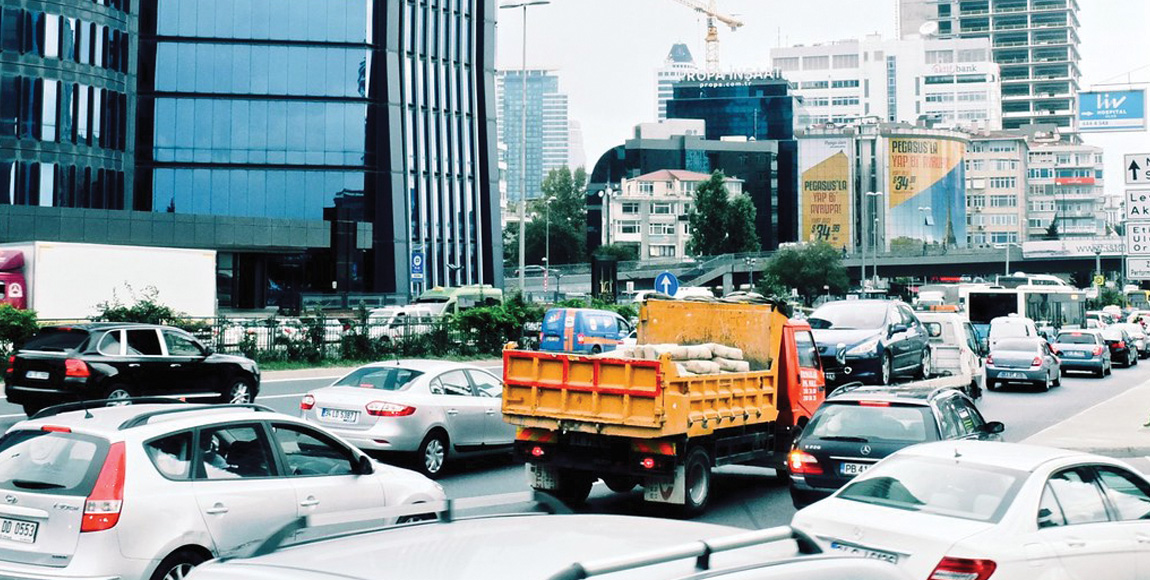Turkish automotive market crashes

Linked, in part, to the “stagflationary” state of the Turkish economy, every segment of the country’s commercial vehicle market has been contracting drastically over the last two-and-a-half years. Just how bad are things expected to get, and what are the ripple effects? LIANA SHAW investigates
An excerpt from a recent article in IHS Markit, reported vehicle production in Turkey had plunged 15 percent year on year, according to data from the Turkish Automotive Manufacturers’ Association.
Haydar Yenigun, GM at Ford Otosan, explains: “Reaching one-million units was the dream of automotive manufacturers in the domestic market. However, with the rise in foreign currency rates the market dropped from one million to around 640 000 units by the end of 2018. The market is expected to drop to 380 000 to 400 000 units by the end of 2019. The sector compensated the situation somewhat with exports.
“We see nearly a 60-percent decrease in the light commercial vehicle market compared to the June sales average of the last ten years. Looking at ten-year data in the January to December 2008 period, the volume of the light commercial vehicle market was 188 025 units.
“Ten years later, it is down to 134 616 units with a 42,33 percent decrease compared to 2018. In comparison to June 2018, the light commercial vehicle market decreased 32,08 percent to 6 664 units in June 2019. Last year, the sales figure was 9 812 units.
“In the first half of 2019 (January to June), the light commercial vehicle market decreased 50 percent to 38 766 units, as opposed to 77 478 units for the same period last year,” he reveals.
“In the January to March period, the sector exported 320 213 vehicles, 209 884 of which were passenger cars, accounting for 89 percent of total production. That being said, vehicle exports in the January to March 2019 period decreased seven percent compared to the same period of 2018,” he adds.
According to Yenigun, the European Union is the country’s main export market. “However, the uncertainties there are also giving some signs. In this time of global trade wars, focusing on exports alone comes with some risks. Therefore, it is important to identify which parts vehicle manufacturers may need in the coming period and to have these produced locally.
“Additionally, the uncertainty around Brexit and its potential impacts continues to create unrest for Turkish automotive manufacturers. If the no-deal Brexit scenario occurs on October 31, it could be the beginning of a rough period for the industry and its exports,” cautions Yenigun.
According to Ahmet Oguz, publishing editor at Devir Saati (a Turkish commercial vehicle publication), the Turkish commercial vehicle market previously ranked among the top six European markets (Germany, France, Britain, Italy, Turkey and Russia) with respect to unit size of those market segments. “But over the last two decades, our position has begun to shift for the first time, due to one crisis after another.
“For example, up until 2017, the five-year-long annual average size of the Turkish heavy-duty truck market (about 16-t gross vehicle weight) had numbered around 30 000 units. In 2017 and 2018, this market segment was able to achieve only roughly half this figure. More alarming still, that number has shrunk by more than half in the first quarter of this year,” he reveals.
Much of this is being blamed on the Turkish currency and debt crisis of 2018, which saw the Turkish lira plunging in value along with high inflation, rising borrowing costs and rising loan defaults.
Says Ford Otosan’s Yenigun: “Some of the key reasons behind the contraction in the sector are the rise in vehicle prices, due to high foreign exchange rates, the increase in consumer loan rates and the decline in the economic confidence index. When you add the difficulties of accessing finance, the market experienced a significant shrinkage. We also see a significant decline in the domestic fleet market, due to the postponement of purchasing decisions until after the elections and financing problems.”
To counter some of these ill-effects on industry, the Turkish government announced a reduction in taxes levied on new automotive sales (March through June), in the hope of sparking a recovery in domestic sales.
“The government’s decisions on SCT and VAT reductions provided vital support to the sector, triggering some recovery in the market and halting the contraction,” confirms Yenigun.
“However, the real problem was the sharp rise in vehicle prices, which was brought about by the spikes in foreign currency rates. Given the increase in consumer loan rates and challenges in accessing loans, the impact of these incentives was limited.
“We believe that similar to home loans, low-interest, no-limit loans with longer maturities should be made available for the automotive industry to overcome this problem. In addition, we advocate the introduction of a purchasing finance support programme to support heavy commercial vehicles.”

Oguz says that, from time to time, government has introduced such campaigns, with some proving more successful than others. “And sometimes, a similar or perhaps the same type of campaign that proved successful before might not achieve the same level of success. Let’s face it, no company would choose to bet the sale of its products and subsequent growth solely on these campaigns.
“The popular Turkish saying, ‘one cannot live without hope’ holds true here. Something needs to be done to help the market climb out of its present slump. I cannot say when the market is expected to recover, but I am confident that in time it will,” says Oguz.
Ford Otosan’s Yenigun concurs: “Bear in mind that commercial vehicle production in Turkey is at a very advanced level, both in the main and supply industries – something which is demonstrated in the country’s high export performance. Turkey currently produces 50 percent of the commercial vehicles sold in the European Union. And Ford Otosan, in particular, leads the way, accounting for 74 percent of the country’s total commercial vehicle production and exports.
“Thankfully, at Ford Otosan, our engineering experience in the heavy commercial sector, coupled with our deep-rooted heritage spanning 60 years, meant we were able to close 2018 with 28,5 percent share in the heavy commercial vehicle market and maintained our traditional leadership in road trucks with more than 50-percent share.
“In construction, our steady rise in recent years was crowned with segment leadership of 39 percent, while in the tractor segment, our market share of 8,8 percent in 2017 rose to 15,6 percent in 2018, marking an important step. Ongoing investment in research and development, together with product investment in the last decade, enabled us to more than double our market share from 2008 to date.”
The good news is that Yenigun does see a light at the end of this tunnel. “We anticipate that the heavy commercial market will capture its former pace with the recovery of other industries and, in particular, the construction sector. With the economic uncertainties drawing to an end, we believe that the domestic market will recover gradually from 2020 onwards, depending on the political and economic conjuncture,” he concludes.
Published by
Focus on Transport
focusmagsa




